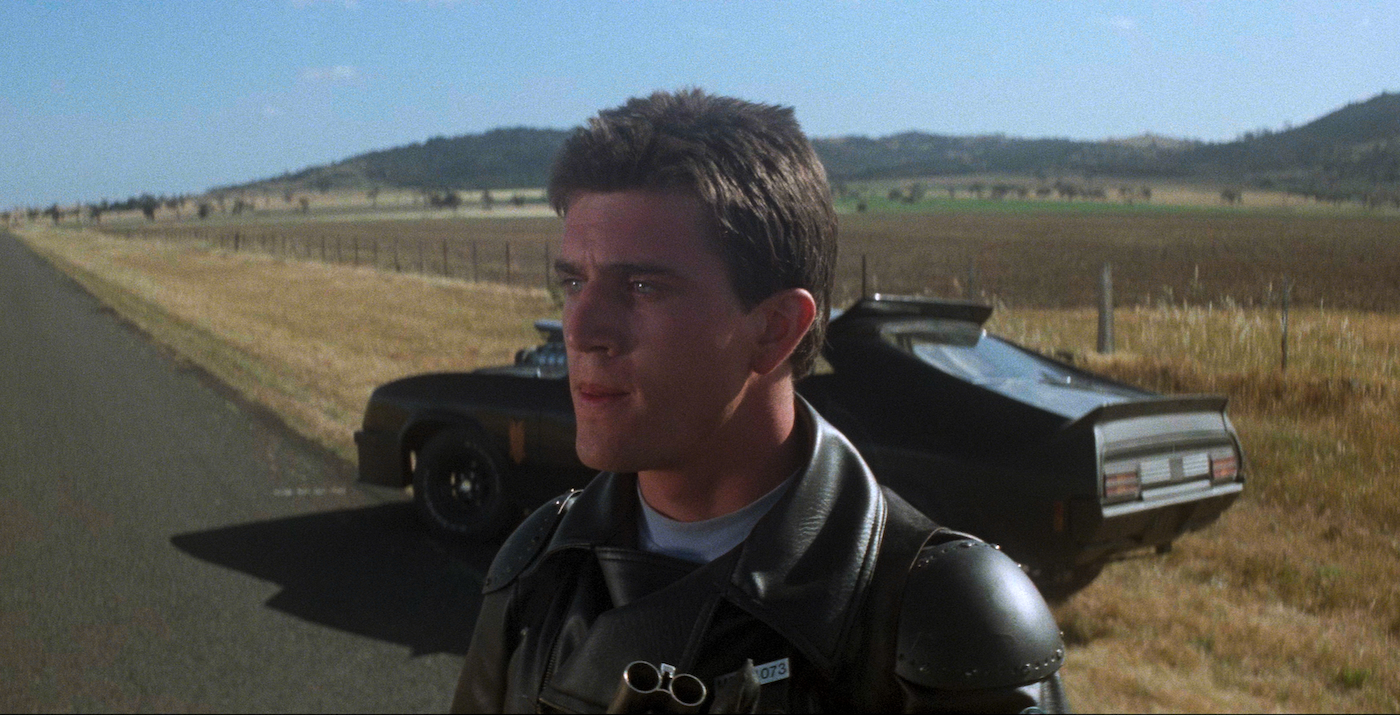
The 1970s was not just a prime decade for science fiction movies but an era in which those movies carried even more urgent messages about the many problems facing humanity on Earth. Sure, the sci-fi outings of the 1950s and early ‘60s carried warnings about nuclear destruction and radiation too, while the latter half of the ‘60s began delving into sociological examinations of race, youth culture, and radical politics. But the ‘70s introduced a whole new set of crises into the genre, in tandem with the growing awareness of such issues in the real world.
Climate change, unchecked population growth, lack of food, heavy pollution—all of those were prevalent in the science fiction cinema of the ‘70s, along with monsters, nuclear holocausts and other holdovers. But the messages seemed to hit harder, at least in the moment, because they were ripped in many cases right from the headlines. Decades later, the same problems are still nipping at our heels with some of them, like climate change, beginning to take real, measurable tolls on human civilization. Yet even though we were warned, in many instances we’re still not listening enough to take action. In some instances, we’re even on the brink of going catastrophically backwards.
Here are nine sci-fi movies of the 1970s that tried to warn us about the direction we were heading in, with those warnings going unheeded even as we enjoyed these movies at the local drive-in, in a second-run theater, or in later years, on home video. We may have ignored these films’ messages at our peril, and we may yet pay a price far steeper than that of a movie ticket.
No Blade of Grass (1970)
Based on a 1956 novel by John Christopher called The Death of Grass, this film from director-writer-producer Cornel Wilde stars Nigel Davenport as a man trying to lead his family out of London and to a place of safety in a remote part of northern England. This migration occurs after heavy pollution gives rise to a new disease that strikes at grass, wheat, rice, and other plants. The resultant loss of crops worldwide causes mass starvation and anarchy as continent after continent falls to food riots, genocide, and even cannibalism.
It’s a grim if familiar scenario (think Ray Milland’s Panic in Year Zero), with Davenport’s John Custance and his small band of survivors doing whatever they must to survive, including killing, as they battle vigilantes, rapists, and gangs along their increasingly desperate journey. While Wilde’s film is more gratuitous and exploitative, famine—and the threat of societal collapse it brings—has been a growing danger for humanity. According to the World Food Programme, in regions including Central America, Haiti, Central Africa, South Sudan, Syria, Yemen, and Gaza, “conflict and climate shocks are driving millions of people to the brink of starvation.”
The Omega Man (1971)
This second adaptation of Richard Matheson’s classic novel I Am Legend (also filmed in 1964 as The Last Man on Earth and in 2007 under its original title) alters the nature of the virus that wipes out most of humanity, leaving only Charlton Heston alive alongside a smattering of other survivors. In this version, the plague is caused by a biological weapon that is deployed during a war between the Soviet Union and China; the virus spreads unchecked throughout the rest of the world, killing off billions and turning most of the survivors into albino mutants with a distaste for technology (not vampires as in the book).
Heston’s Robert Neville, a scientist, injects himself with an experimental vaccine just as the plague spreads, possibly rendering him the only immune person on the planet. While the mutants behave unnervingly like our current anti-vax crowd, biological weapons of one kind or another have been around since at least the 12th century and emerged as a genuine threat to civilization in the 20th century, with the U.S., the Soviet Union, China, and other nations all developing various weaponized agents. There have been relatively few biological attacks, and various protocols are in place to stop their deployment, but as of 2021, 17 nations have had or still have biological weapon programs. All it takes is one leak. Some have speculated it’s already occurred.
Godzilla vs. Hedorah (1971)
Known in the U.S. as Godzilla vs. the Smog Monster, the 11th film in the Godzilla franchise is remembered as one of its more juvenile entries, complete with animated sequences, a grating theme song (“Save the Earth,” which was only featured in the American version), and a still-divisive scene in which Godzilla flies. Yet it also contains some disturbing imagery of humans (and a little kitten!) buried in sludge secreted by the title monster, which comes from space and feeds off pollution to grow into a world-threatening menace before Godzilla takes it down at the cost of an eye and claw.
Just as the original Gojira was about the devastating aftermath of atomic radiation, Godzilla vs. Hedorah is very much concerned with environmental pollution. Sadly, 53 years after the film’s release, the problem is still with us: while air quality has improved over the last several decades, the European Environment Agency reports that many European cities still face dangerous levels of pollution, contributing to over 300,000 premature deaths in 2021 alone. That makes Hedorah look like an amateur.
Silent Running (1972)
Environmental catastrophe is a recurring theme in many of the movies on this list, even before terms like “global warming” and “climate change” became part of the everyday lexicon. In VFX master Douglas Trumbull’s directorial debut, Silent Running, almost all flora on Earth has been destroyed; the rest has been transplanted to eight geodesic domes hitched to spacecraft in orbit around Saturn. When the crews of each ship are ordered to destroy the domes and return home, one ecologist (Bruce Dern), aided by three little cinematic ancestors of R2-D2, embarks on a dangerous course of action to save the last dome—and the last remaining Earth plant life.
Dern is his usual flaky self, and no one would accuse Silent Running of having a light touch, but Trumbull’s film is exceptionally well-produced, tautly directed, and ultimately moving. While the loss of all greenery on Earth in the film is due to commercial exploitation, in reality it’s climate change that is making various species of plants vanish from the face of the planet in frightening numbers: As of 2020, an estimated 40 percent of plant species were threatened with extinction. Better start building those domes.
Z.P.G. (1972)
Perhaps the most obscure film on this list, this Danish-American co-production stars Oliver Reed and Geraldine Chaplin as a couple who live in, you guessed it, a bleak future dystopia where pollution and overpopulation have driven civilization underground. The totalitarian world government has banned people from having kids for 30 years in an effort to curb the population growth, with animatronic “children” offered as substitutes. When Reed and Chaplin have a baby, they struggle to keep the child a secret from both the government and their friends. The attempt at parenthood comes with alarming consequences.
Z.P.G. (which stands for Zero Population Growth) was inspired by a book called The Population Bomb by Paul R. Ehrlich and Anne H. Ehrlich, in which the two Stanford professors predicted worldwide famines by the mid-1970s and suggested controversial means to control population growth, including introducing sterilization agents into the water supply and financial penalties for families having more children. Many of the Ehrlichs’ predictions (such as global food shortages before the 1980s) did not come to pass, and the book’s questionable solutions came under heavy criticism. But as we see above and below, the underlying issues haven’t gone away either.
Soylent Green (1973)
Loosely based on Harry Harrison’s 1966 novel Make Room! Make Room!, director Richard Fleischer’s nightmarish film presents a bleak future where overpopulation and climate change have resulted in the slow death of the oceans, rampant pollution, and depleted sources of food, driving the world and human society to the brink of cataclysm. Charlton Heston plays Thorn, a detective whose investigation of the murder of a high-powered executive in a corporation providing a new source of food leads him to make a horrifying discovery.
While critics were initially mixed on the movie, it has become something of a cult classic over the years, and its best parts—the opening montage showing the gradual growth of the population and the poignant scene in which Edward G. Robinson (who died after completing his role) passes away surrounded by images of a long-gone American wilderness—have only gained in power. And why shouldn’t they: overpopulation is very much a going concern, while 44 million people in the United States alone experience food insecurity every year. While we’re already past the year in which Soylent Green is set (2022), its grim future may still be ahead.
The China Syndrome (1979)
James Bridges’ riveting thriller, in which a TV reporter (Jane Fonda) and her cameraman (Michael Douglas) discover that a near-meltdown at a nuclear power plant has been covered up—all while a lone whistleblower (a stunning Jack Lemmon) warns it could happen again—is the most realistic of the films we’re discussing here. It takes place in the present, not some dystopian future, and it also had the benefit of eerily coincidental timing: The film was released in March 1979, less than two weeks before a reactor at the Three Mile Island nuclear power plant in Pennsylvania suffered a partial meltdown in what remains the worst commercial nuclear power accident in U.S. history.
Although we may have initially ignored the warnings in many of the films on this list, The China Syndrome is perhaps the exception. The film’s success at the box office arguably combined with the Three Mile Island incident to increase awareness of the potential risks for accidents at nuclear power plants, leading to more regulations in the industry and, eventually, a general slowdown in the construction of more nuclear reactors—a decline only exacerbated by the Chernobyl and Fukushima disasters.
Prophecy (1979)
Written by The Omen scribe David Seltzer and directed by a quickly-passing-his-prime John Frankenheimer, Prophecy stars Robert Foxworth as Dr. Robert Verne, a scientist working for the EPA who is sent to Maine to investigate a dispute between a logging business and a local Native American tribe. He discovers that the logging operation is spilling mercury into the area’s water and mutating the wildlife, including a bear that has turned into a hideous, monstrous killing machine. And Verne’s wife (Talia Shire), who is pregnant, has been unknowingly eating contaminated fish since they arrived.
Prophecy may well be the worst movie on this list (yes, even beating out Godzilla vs. Hedorah), and has been widely derided over the years for its poor special effects, undercooked script, and lackadaisical direction. There are some decent moments scattered throughout the picture, and the truth is that logging, mining, and other forestry operations can cause considerable water pollution. Whether that pollution can lead to the creation of crazed raccoons and oversized mutant bears remains to be seen.
Mad Max (1979)
It’s hard to remember after the Mad Max films have turned into large-scale, post-apocalyptic fables, but the original 1979 movie (made for less than $1 million) was set in a near-future where society was just starting to break down due to widespread, global oil shortages. The increasing lawlessness and emergence of vicious gangs are what set Australian police officer Max Rockatansky (Mel Gibson) on his path to becoming the warrior we know today, and anyone who sees Mad Max: Fury Road and Furiosa, and then goes back to watch Mad Max may be surprised at the saga’s truly modest beginnings.
What we should remember, however, is that director George Miller’s co-writer on Mad Max, James McCausland, was very concerned about the prospect of the world reaching peak oil and descending into shortage-induced chaos. In a 2006 article about the issues that inspired the film—including the 1973 oil crisis—McCausland wrote, “One of the pernicious problems about peaking is that we will only be able to identify the problem after it has occurred… if we don’t recognize the problem well in advance, a disaster of unforeseen magnitude could befall us.” According to some estimates, our world might start looking more like Max’s around 2030. So if that one comes true, don’t say we didn’t have enough time to do something about it.
The post All the Environmental Disaster Movie Warnings of the ’70s We Should Have Listened To appeared first on Den of Geek.







